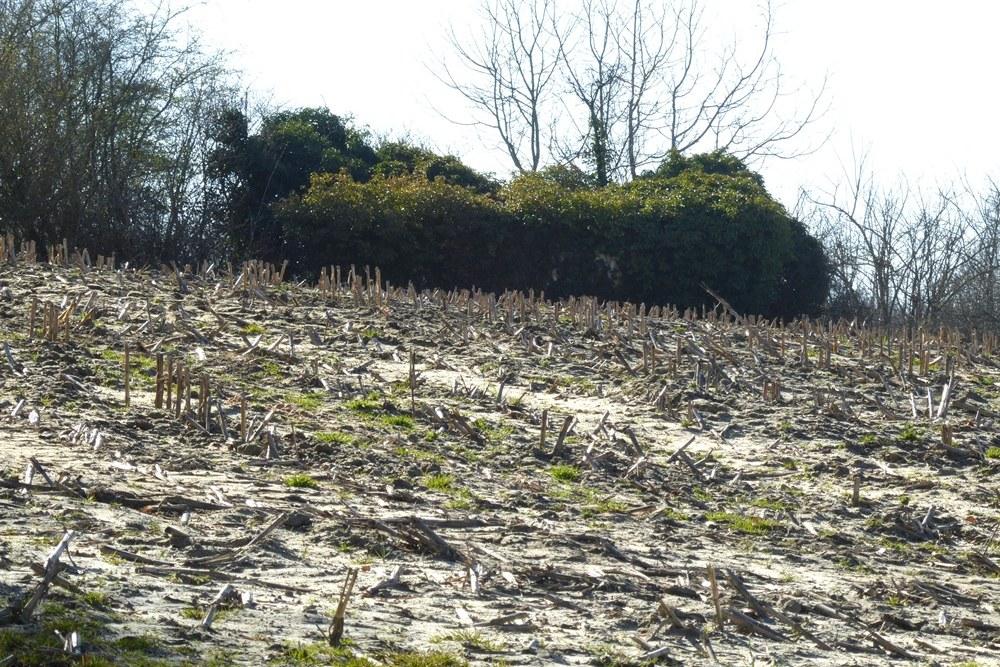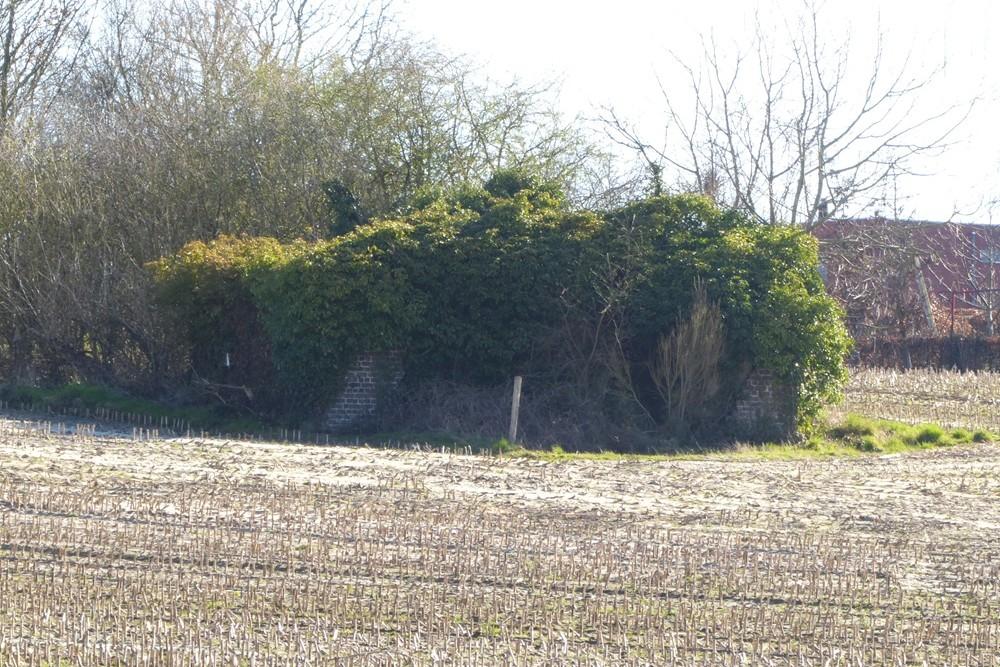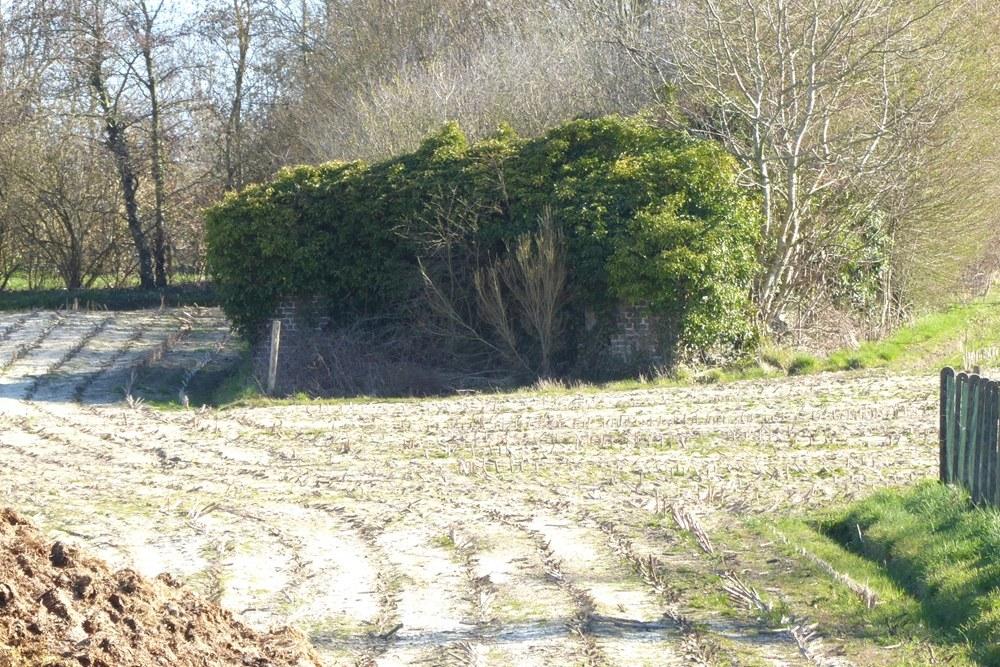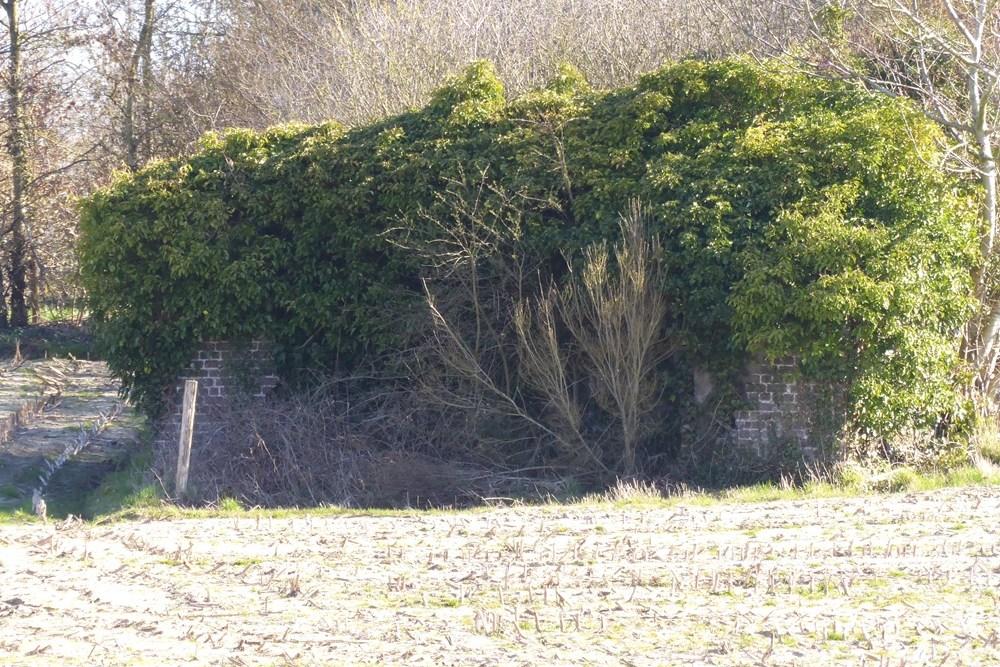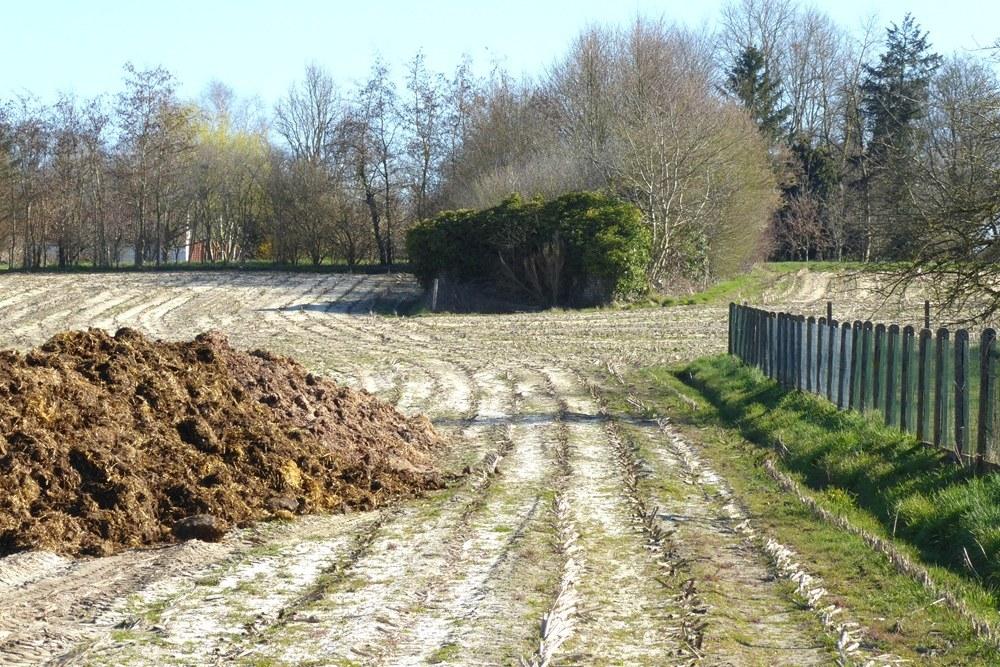Bunker Belt Bruggenhoofd Gent – Rear Line Bunker B17
Belgian bunker, part of the Ghent Bridgehead. This defensive position was constructed between 1934 and 1938, eight kilometres south of Ghent. Its construction was part of the fortification policy that Belgium pursued after the First World War.
The actual bridgehead consisted of two resistance nests – Betsberg and Muntekouter – and three strong points – Semmerzake, Eke and Astene.
The resistance nests and strong points were connected to each other by a curtain consisting of three defence lines.
There are 6 bunkers on the territory of Melsen. Most of them are still visible but sometimes overgrown.
B17 was the northernmost of two rear line bunkers, placed close together between the Scheldt and Muntekouter. The bunker was located approximately 375 meters from the Scheldt.
It looked like a cottage or small farm. It was walled with brick, because of the dome there was a flat hipped roof with red Boom roof tiles.
The bunker consisted of two rooms connected at the back and an airlock. At the back of the second room there was a dome from which orders were passed on to the machine gunner via a voice carrier tube.
Each room was equipped for setting up a standard Maxim machine gun but it was also possible to set up two Hotchkiss or Colt machine guns.
The bunker is located in the path called Stenen Molen. It is located in the field behind a small hill and is quite overgrown with ivy and small trees.
Extensive information about this bunker belt can be found on the site Bunkergordel Bruggenhoofd Gent. It also contains photos, plans and technical data of the bunkers. A map shows the locations per municipality.
Do you have more information about this location? Inform us!
Source
- Text: TracesOfWar
- Photos: Marie-Christine Vinck
Nearby
Point of interest
- Information Board Battle of Gavere Semmerzake - Semmerzake (Gavere)
- Remains Eiserne Halle Scheldewindeke - Scheldewindeke (Oosterzele)
- Former German Airfield Gontrode - Gontrode (Merelbeke -Melle)
Monument
- War Memorial Melsen - Melsen (Merelbeke-Melle)
- War Memorial Vurste - Vurste (Gavere)
- War Memorial Churchyard Vurste - Vurste (Gavere)
Cemetery
- Belgian War Graves Melsen - Melsen (Merelbeke-Melle)
- Belgian Graves Veterans Melsen - Melsen (Merelbeke-Melle)
- Belgian War Grave Vurste - Vurste (Gavere)
Remembrance Stone
- Stumbling Stone Kortrijksesteenweg 890 - Gent
- Stumbling Stone Monterreystraat 63 - Gent
- Stumbling Stone Fortlaan 93 - Gent
